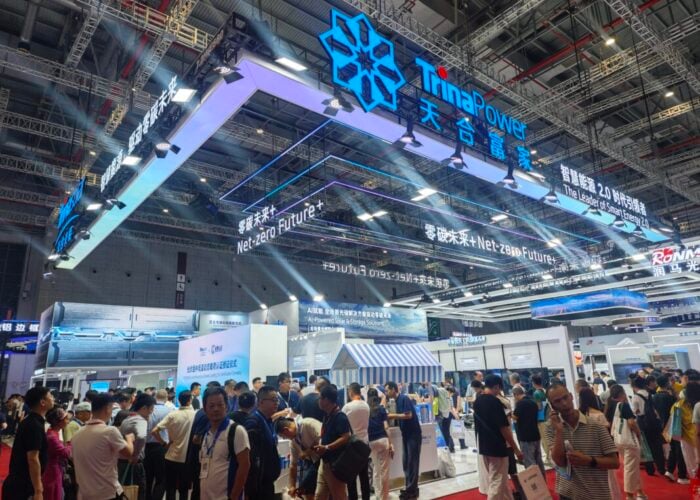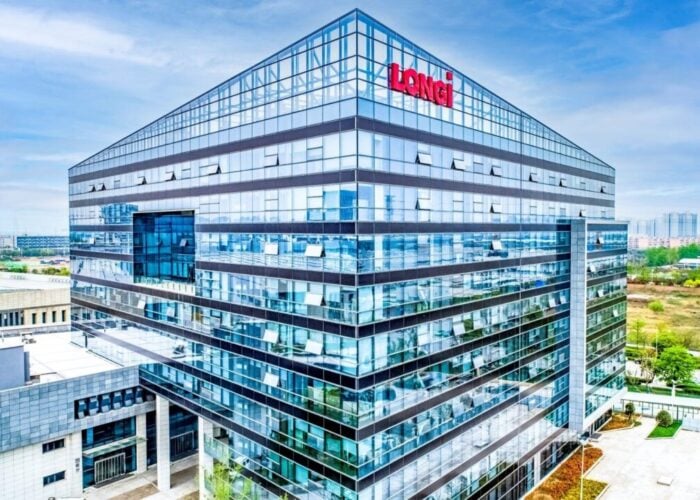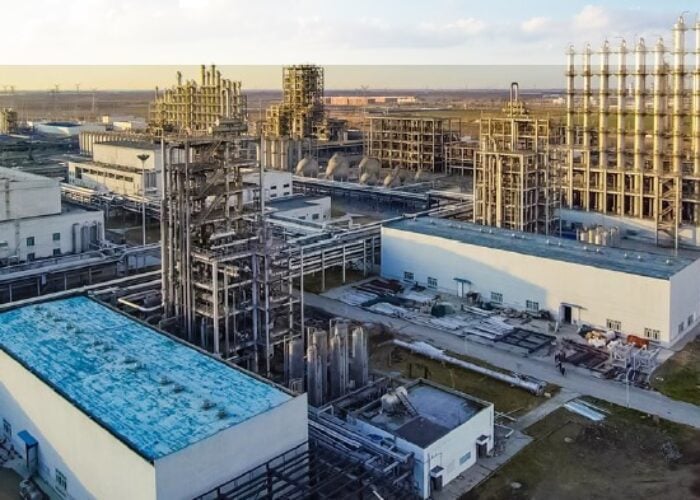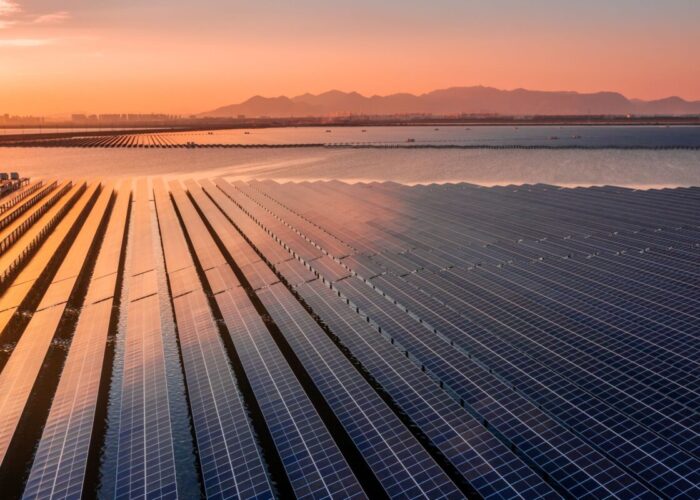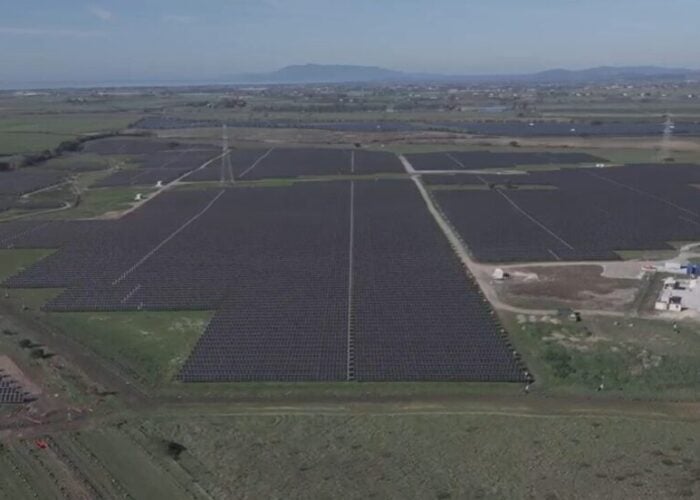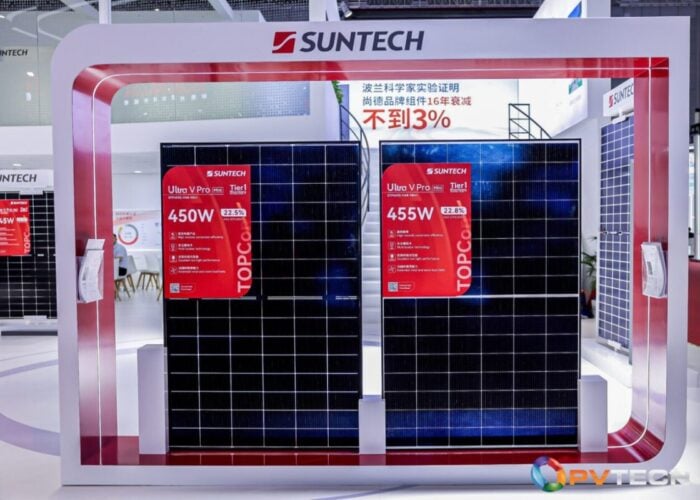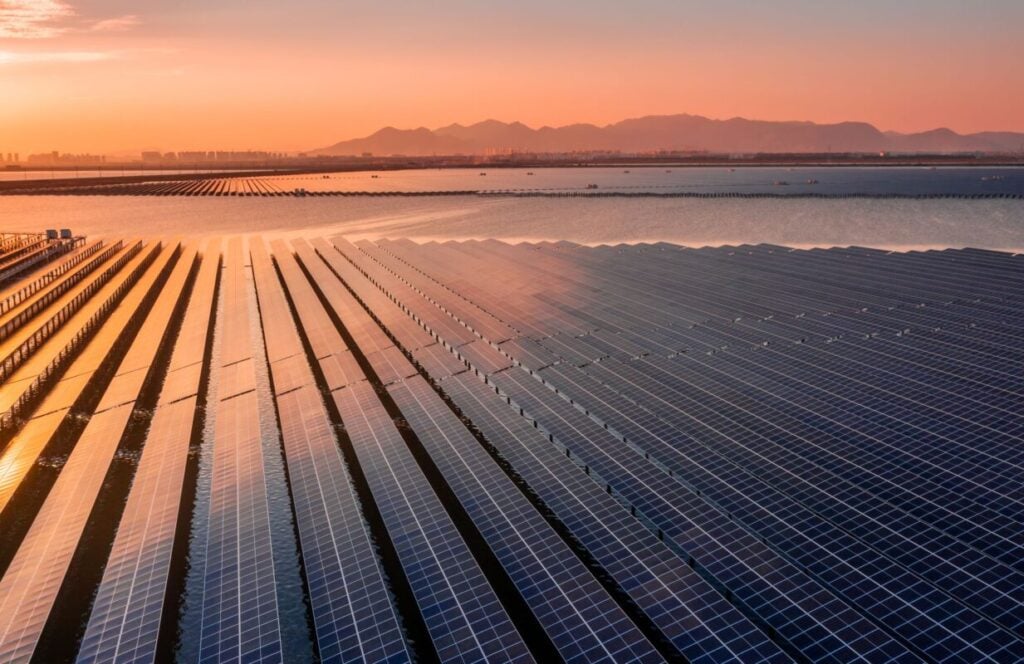
Pioneering projects in China are demonstrating how the potential of solar power can be harnessed across a wide range of new settings. Carrie Xiao explores the many applications for PV beyond traditional power plants.
Unlock unlimited access for 12 whole months of distinctive global analysis
Photovoltaics International is now included.
- Regular insight and analysis of the industry’s biggest developments
- In-depth interviews with the industry’s leading figures
- Unlimited digital access to the PV Tech Power journal catalogue
- Unlimited digital access to the Photovoltaics International journal catalogue
- Access to more than 1,000 technical papers
- Discounts on Solar Media’s portfolio of events, in-person and virtual
The evolving sophistication and falling costs of photovoltaic technology are helping drive solar power generation towards an unprecedented “PV+” era. This allows clean energy to access every aspect of the social economy, painting a future of diversified symbiosis and harmonious development.
The PV+ concept goes beyond merely expanding PV technology applications. It represents a deep integration of the PV industry with various sectors. In this model, PV technology is no longer confined to traditional power plants but is integrated with agriculture, construction, transportation, communication and industrial manufacturing, creating a comprehensive, efficient clean energy network.
In recent years, the PV+ model in China has been developing with a particularly strong momentum. This innovative model has not only promoted the transformation and upgrading of the PV industry but also facilitated the greening process of many traditional industries. By deeply integrating PV with other industries, diverse application scenarios and solutions have been created. Let’s explore three representative PV+ projects in real-life scenarios.
Power generation above, fish farming below
Location: Wenzhou, Zhejiang, China
In the Ou Fei Wei District within the Zhejiang South Industrial Cluster in Wenzhou, Zhejiang, China, a PV power station spans approximately 4.7 square kilometers. Comprising 1,396,000 modules arranged into 24 blocks, this facility is nestled on a mudflat where occasionally, fish can be seen leaping from the water, while fishermen navigate the waters in small boats. This scene belongs to the Wenzhou Taihan 550MW Fishery-Solar Complementary Power Generation Project, the largest mudflat fishery-solar project of its type.
Covering approximately 493 hectares of sea area, this complex maritime technical project was developed and constructed by Chint Green Energy. Astronergy supplied the modules and it interconnected to the grid on 16 December 2021. By integrating aquaculture and PV power generation, the project pioneers a new model where power is generated above while fish are farmed below.
The project generates approximately 650 million kilowatt-hours annually. Compared to coal-fired power plants of similar output, it saves about 235,000 tons of standard coal and reduces carbon dioxide emissions by approximately 648,000 tons per year, generating an average annual output value of RMB335 million (US$46.2 million).
Chint Green Energy faced numerous challenges during construction. Given the complexities of building foundations on the sea mudflat, the construction environment was particularly demanding. The builders employed a container ship piling method, enhancing piling efficiency and accuracy, and significantly shortening the construction period. Permeable structures were used for the booster station platform to meet marine requirements.
According to the project development head at Chint Green Energy, around 160,000 precast piles were used. To ensure a smooth grid connection, over 1,000 piles were driven daily, with a workforce of over 1,000 people per day during peak construction.
Due to the saline and humid air conditions typical of the mudflat area, along with frequent typhoons and the hot and rainy weather of summer, there were elevated requirements for environmental adaptability and reliability in the photovoltaic equipment selection.
The station utilises Astronergy’s ASTRO 450Wp monocrystalline silicon modules and some dual-glass modules. These ASTRO PV modules not only endure daily sunlight and wind but also face the challenge of moisture transpiration. Moisture intrusion can cause corrosion of the solar cells and electrical connections within the modules, significantly degrading their power generation capacity and causing visible damage.
The ASTRO modules use a high-density encapsulation process to tightly prevent moisture ingress, ensuring their durability in high humidity, high saline mist, high wave and high thermal spot environments.
During the design phase, the project explored the differences in power generation enhancements between various types of PV modules, setting up experimental comparison arrays of dual-glass modules. Eleven months of grid connection data indicated an increase in power generation by approximately 50,000kWh. This data provides a reference for module selection and efficiency analysis in future fishery-solar complementary projects.
The project has pioneered an innovative new model that demonstrates how PV power generation can be combined with other income-generating activities to make optimal use of available space in the ocean and achieve economic, social and environmental benefits.
Green power from the heart of the Horqin Grasslands
Location: Inner Mongolia Autonomous Region
In northwestern China, within the heart of the Horqin Grasslands, lies the emerging industrial city of Holingol. Adjacent to Zalute Banner of Tongliao City, this area is celebrated as one of China’s most beautiful mountainous grasslands.
The region, known not only for its stunning landscapes but also for its abundant solar resources, has become an ideal location for constructing PV power stations. In 2022, the State Power Investment Corporation Limited (SPIC) Inner Mongolia Huomei Hongjun Branch erected a 100MW PV station here. The facility was designed to complement the traditional herding practices for which the region is known.
“The Herd-Solar project combines photovoltaic modules with animal husbandry facilities to achieve complementary utilisation in space,” says an employee from SPIC. “The specific implementation method includes laying PV modules on the roof or surrounding open space of the breeding farm, using PV modules to generate electricity without affecting the breeding activities below.
“PV modules provide shade and wind protection, effectively reducing surface water evaporation and wind erosion. After a period of time, vegetation grows under the modules, improving the land and plant ecology of the pasture, providing a better growth environment for farmed animals. The Herd-Solar Complementary Project prevents soil erosion, meets breeding needs and increases income for herders.”
The Zalute grassland region experiences significant temperature variations between day and night and has a harsh natural environment, necessitating high-quality and reliable PV equipment. At the project site, Ginlong Solis GCI-230K-EHV-5G-PLUS ground station PV inverters are seen operating steadily.
The Solis 230K inverter, tested on-site, runs stably in temperatures ranging from -40°C to 60°C and features IP66 protection and C5 corrosion resistance. Its reliability makes it a good neighbour to the grassland animals.
Exploring China’s solar farms
Location: Hainan Province, Wanning City, and Hele Town
During the hot summer season, under the blazing sun in Hele Town, Wanning City, Hainan Province, a “solar farm” covering more than 1,200mu (about 80 hectares) shimmers as it quietly generates power. Beneath these solar panels, lush green vegetables thrive.
The station, which consists of over 160,000 solar panels, was developed by Datang Hainan Energy Development Co., Ltd. It was built using a steel framework covered with solar panels according to the “power generation above, planting below, agriculture-solar complementarity” model.
“Between and beneath the rows of solar panels, vegetables are intercropped and relay cropped under the panels, generating power above and cultivating crops below in a three-dimensional agricultural production model that maximises land productivity,” explains Cao Shuan, the station manager of Datang Wanning Heshan PV Station.
After the solar greenhouse was completed, the construction team invited agricultural expert Fang Shuming to teach local villagers planting techniques and conduct on-site demonstrations. “The solar greenhouse serves multiple functions: it protects against rain and wind, provides sprinkler irrigation, drainage, pest control and temperature control, and monitors crop growth and soil pH balance,” Fang says. “Our agricultural greenhouse can grow seven crops of vegetables per mu per year, with each crop yielding about 1,500 kilograms, resulting in more than 5,000 kilograms per mu annually, securing the vegetable supply for the surrounding area.”
Fang further explains that cultivating crops under PV panels not only releases industrial capacity and saves corporate costs but also improves the local soil conditions and ecological environment, preventing soil erosion and ensuring full utilisation of land resources, which aids in sustainable regional development.
“This land had been left fallow for many years, impoverished and unwanted for cultivation, but the construction of the power station has revitalised it,” says Zeng Lingyan, a villager from Hele Town. “With the establishment of the solar station, the abandoned land has been given new life.”
More applications, more challenges
The examples above are just a small part of the numerous PV+ innovative applications emerging throughout China.
In the transportation sector, the “PV+transportation” model is gradually changing travel methods. The emergence of PV highways and PV carports not only provides green charging stations for vehicles but also achieves a perfect integration of roads and energy production. In the construction sector, building integrated photovoltaics (BIPV) technology is leading a new trend in green building.
By integrating PV modules directly into the exteriors and roofs of buildings, this technology not only enables buildings to generate their own power but also significantly enhances their aesthetic appeal and energy efficiency. This technology is applicable not only to new constructions but also plays a significant role in retrofitting old buildings and promoting the green upgrade of urban development.
Additionally, new models such as “PV+communications” and “PV+smart cities” are emerging, deeply integrating PV technology with other industries and collectively advancing the development of emerging fields such as the energy internet, smart manufacturing and smart cities. These applications enhance energy efficiency while promoting sustainable economic and social development.
Although the PV+ model has reached multiple sectors, its broader promotion still requires deep integration and efficient collaboration between PV and other technologies.
Significant differences in technical standards, operational models and market demands across industries pose a major challenge in effectively integrating these resources and achieving seamless technological integration.
Ongoing technological innovation to reduce costs and enhance efficiency is also a key challenge, especially in the fields of materials science, energy storage technology and smart grids. Additionally, as “PV+” projects are widely deployed, the rapid increase in PV power generation poses higher demands on the grid’s connection capacity and absorption capability. The flexibility, intelligence level and cross-regional dispatching capacity of the grid need to be further enhanced to reduce the phenomenon of wasted energy and maintain the stability of the power system.
These issues and challenges require PV companies to engage in more PV+ application exploration and practice, drive technological innovation and industry upgrading, and strengthen interdisciplinary and inter-industry cooperation and exchange, collectively promoting the healthy and rapid development of the PV+ model.

